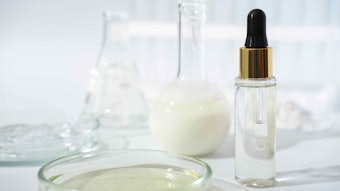Industry expert Anthony O'Lenick Jr. explains the difference between molecules that act like surfactants for aqueous systems versus oil systems.
There are two salient characteristics of surface active agents or surfactants. First, these compounds have two or more groups that are not soluble in each other in their pure form because they are either oil-loving (oleophilic), silicone-loving (siliphillic), or water-loving (hydrophilic). Compounds lacking this type of construction are not surfactants. Second, a surfactant must be soluble— i.e., clear when added to a formula, and it must lower surface tension.
Aqueous surfactants simply are surfactants that are soluble in water and reduce surface tension. This can be achieved by using either fatty surfactants or silicone surfactants. Fatty surfactants are compounds with both oil-soluble and water-soluble groups whereas silicone surfactants are compounds with silicone-soluble and water-soluble groups.
The surface tension of the resulting aqueous surfactant solution will be different depending on the surfactant used. A fatty surfactant such as sodium lauryl sulfate will reduce the surface tension of the water from about 72 dynes/cm2 to around 32 dynes/cm2, while a silicone surfactant, such as PEG-8 dimethicone, will reduce the surface tension of the water from about 72 dynes/cm2 to around 20 dynes/cm2.
Varying the surface tension of the resulting solution can adjust the feel, change the bubble size and texture, and alter other properties of the solution. Thus, selecting the proper materials will allow the formulator to achieve different aesthetics in the formulation.










